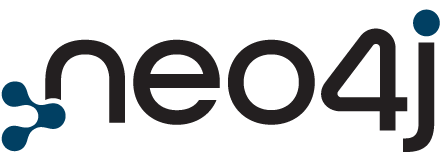DBMS > Drizzle vs. MySQL vs. Oracle
System Properties Comparison Drizzle vs. MySQL vs. Oracle
Please select another system to include it in the comparison.
| Editorial information provided by DB-Engines | ||||||||||||||||||||||||||||||||||||||||||||||||||||||||||||||||||||||||||||||||||||||||||||||||||
| Name | Drizzle Xexclude from comparison | MySQL Xexclude from comparison | Oracle Xexclude from comparison | |||||||||||||||||||||||||||||||||||||||||||||||||||||||||||||||||||||||||||||||||||||||||||||||
| Drizzle has published its last release in September 2012. The open-source project is discontinued and Drizzle is excluded from the DB-Engines ranking. | ||||||||||||||||||||||||||||||||||||||||||||||||||||||||||||||||||||||||||||||||||||||||||||||||||
| Description | MySQL fork with a pluggable micro-kernel and with an emphasis of performance over compatibility. | Widely used open source RDBMS | Widely used RDBMS | |||||||||||||||||||||||||||||||||||||||||||||||||||||||||||||||||||||||||||||||||||||||||||||||
| Primary database model | Relational DBMS | Relational DBMS | Relational DBMS | |||||||||||||||||||||||||||||||||||||||||||||||||||||||||||||||||||||||||||||||||||||||||||||||
| Secondary database models | Document store Spatial DBMS | Document store Graph DBMS RDF store Spatial DBMS Vector DBMS | ||||||||||||||||||||||||||||||||||||||||||||||||||||||||||||||||||||||||||||||||||||||||||||||||
|
|
| ||||||||||||||||||||||||||||||||||||||||||||||||||||||||||||||||||||||||||||||||||||||||||||||||
| Website | www.mysql.com | www.oracle.com/database | ||||||||||||||||||||||||||||||||||||||||||||||||||||||||||||||||||||||||||||||||||||||||||||||||
| Technical documentation | dev.mysql.com/doc | docs.oracle.com/en/database | ||||||||||||||||||||||||||||||||||||||||||||||||||||||||||||||||||||||||||||||||||||||||||||||||
| Developer | Drizzle project, originally started by Brian Aker | Oracle | Oracle | |||||||||||||||||||||||||||||||||||||||||||||||||||||||||||||||||||||||||||||||||||||||||||||||
| Initial release | 2008 | 1995 | 1980 | |||||||||||||||||||||||||||||||||||||||||||||||||||||||||||||||||||||||||||||||||||||||||||||||
| Current release | 7.2.4, September 2012 | 9.0.0, July 2024 | 23c, September 2023 | |||||||||||||||||||||||||||||||||||||||||||||||||||||||||||||||||||||||||||||||||||||||||||||||
| License | Open Source | Open Source | commercial | |||||||||||||||||||||||||||||||||||||||||||||||||||||||||||||||||||||||||||||||||||||||||||||||
| Cloud-based only | no | no | no | |||||||||||||||||||||||||||||||||||||||||||||||||||||||||||||||||||||||||||||||||||||||||||||||
| DBaaS offerings (sponsored links) Providers of DBaaS offerings, please contact us to be listed. | ||||||||||||||||||||||||||||||||||||||||||||||||||||||||||||||||||||||||||||||||||||||||||||||||||
| Implementation language | C++ | C and C++ | C and C++ | |||||||||||||||||||||||||||||||||||||||||||||||||||||||||||||||||||||||||||||||||||||||||||||||
| Server operating systems | FreeBSD Linux OS X | FreeBSD Linux OS X Solaris Windows | AIX HP-UX Linux OS X Solaris Windows z/OS | |||||||||||||||||||||||||||||||||||||||||||||||||||||||||||||||||||||||||||||||||||||||||||||||
| Data scheme | yes | yes | yes | |||||||||||||||||||||||||||||||||||||||||||||||||||||||||||||||||||||||||||||||||||||||||||||||
| Typing | yes | yes | yes | |||||||||||||||||||||||||||||||||||||||||||||||||||||||||||||||||||||||||||||||||||||||||||||||
| XML support | yes | yes | ||||||||||||||||||||||||||||||||||||||||||||||||||||||||||||||||||||||||||||||||||||||||||||||||
| Secondary indexes | yes | yes | yes | |||||||||||||||||||||||||||||||||||||||||||||||||||||||||||||||||||||||||||||||||||||||||||||||
| SQL | yes | yes | yes | |||||||||||||||||||||||||||||||||||||||||||||||||||||||||||||||||||||||||||||||||||||||||||||||
| APIs and other access methods | JDBC | ADO.NET JDBC ODBC Proprietary native API | JDBC ODBC ODP.NET Oracle Call Interface (OCI) | |||||||||||||||||||||||||||||||||||||||||||||||||||||||||||||||||||||||||||||||||||||||||||||||
| Supported programming languages | C C++ Java PHP | Ada C C# C++ D Delphi Eiffel Erlang Haskell Java JavaScript (Node.js) Objective-C OCaml Perl PHP Python Ruby Scheme Tcl | C C# C++ Clojure Cobol Delphi Eiffel Erlang Fortran Groovy Haskell Java JavaScript Lisp Objective C OCaml Perl PHP Python R Ruby Scala Tcl Visual Basic | |||||||||||||||||||||||||||||||||||||||||||||||||||||||||||||||||||||||||||||||||||||||||||||||
| Server-side scripts | no | yes | PL/SQL | |||||||||||||||||||||||||||||||||||||||||||||||||||||||||||||||||||||||||||||||||||||||||||||||
| Triggers | no | yes | yes | |||||||||||||||||||||||||||||||||||||||||||||||||||||||||||||||||||||||||||||||||||||||||||||||
| Partitioning methods | Sharding | horizontal partitioning, sharding with MySQL Cluster or MySQL Fabric | Sharding, horizontal partitioning | |||||||||||||||||||||||||||||||||||||||||||||||||||||||||||||||||||||||||||||||||||||||||||||||
| Replication methods | Multi-source replication Source-replica replication | Multi-source replication Source-replica replication | Multi-source replication Source-replica replication | |||||||||||||||||||||||||||||||||||||||||||||||||||||||||||||||||||||||||||||||||||||||||||||||
| MapReduce | no | no | no | |||||||||||||||||||||||||||||||||||||||||||||||||||||||||||||||||||||||||||||||||||||||||||||||
| Consistency concepts | Immediate Consistency | Immediate Consistency | ||||||||||||||||||||||||||||||||||||||||||||||||||||||||||||||||||||||||||||||||||||||||||||||||
| Foreign keys | yes | yes | yes | |||||||||||||||||||||||||||||||||||||||||||||||||||||||||||||||||||||||||||||||||||||||||||||||
| Transaction concepts | ACID | ACID | ACID | |||||||||||||||||||||||||||||||||||||||||||||||||||||||||||||||||||||||||||||||||||||||||||||||
| Concurrency | yes | yes | yes | |||||||||||||||||||||||||||||||||||||||||||||||||||||||||||||||||||||||||||||||||||||||||||||||
| Durability | yes | yes | yes | |||||||||||||||||||||||||||||||||||||||||||||||||||||||||||||||||||||||||||||||||||||||||||||||
| In-memory capabilities | yes | yes | ||||||||||||||||||||||||||||||||||||||||||||||||||||||||||||||||||||||||||||||||||||||||||||||||
| User concepts | Pluggable authentication mechanisms | Users with fine-grained authorization concept | fine grained access rights according to SQL-standard | |||||||||||||||||||||||||||||||||||||||||||||||||||||||||||||||||||||||||||||||||||||||||||||||
More information provided by the system vendorWe invite representatives of system vendors to contact us for updating and extending the system information, | ||||||||||||||||||||||||||||||||||||||||||||||||||||||||||||||||||||||||||||||||||||||||||||||||||
Related products and servicesWe invite representatives of vendors of related products to contact us for presenting information about their offerings here. | ||||||||||||||||||||||||||||||||||||||||||||||||||||||||||||||||||||||||||||||||||||||||||||||||||
| More resources | ||||||||||||||||||||||||||||||||||||||||||||||||||||||||||||||||||||||||||||||||||||||||||||||||||
| Drizzle | MySQL | Oracle | ||||||||||||||||||||||||||||||||||||||||||||||||||||||||||||||||||||||||||||||||||||||||||||||||
| DB-Engines blog posts | MySQL won the April ranking; did its forks follow? Has MySQL finally lost its mojo? | MySQL is the DBMS of the Year 2019 MariaDB strengthens its position in the open source RDBMS market The struggle for the hegemony in Oracle's database empire | DB-Engines shares Q1 2025 database industry rankings and top climbers: Snowflake and PostgreSQL trending MySQL is the DBMS of the Year 2019 The struggle for the hegemony in Oracle's database empire MySQL at 30: Still important but no longer king 30 years of MySQL, the database that changed the world MySQL Explained: Your Guide to Mastering This Powerful Database Migrate very large databases to Amazon Aurora MySQL using MyDumper and MyLoader Build global MySQL apps using Cloudflare Workers and Hyperdrive provided by Google News Sphere Powers its AI Platform with Oracle Database 23ai Oracle and Google Cloud Announce Industry-First Partner Program and Powerful New Capabilities for Oracle Database@Google Cloud How Oracle AI Vector Search Stacks Up Against Chroma for Similarity Search Oracle and Microsoft Add Powerful, Flexible New Services to Oracle Database@Azure and Expand Regional Availability Oracle and Google Cloud Expand Regional Availability and Add Powerful New Capabilities to Oracle Database@Google Cloud provided by Google News | |||||||||||||||||||||||||||||||||||||||||||||||||||||||||||||||||||||||||||||||||||||||||||||||
Share this page




